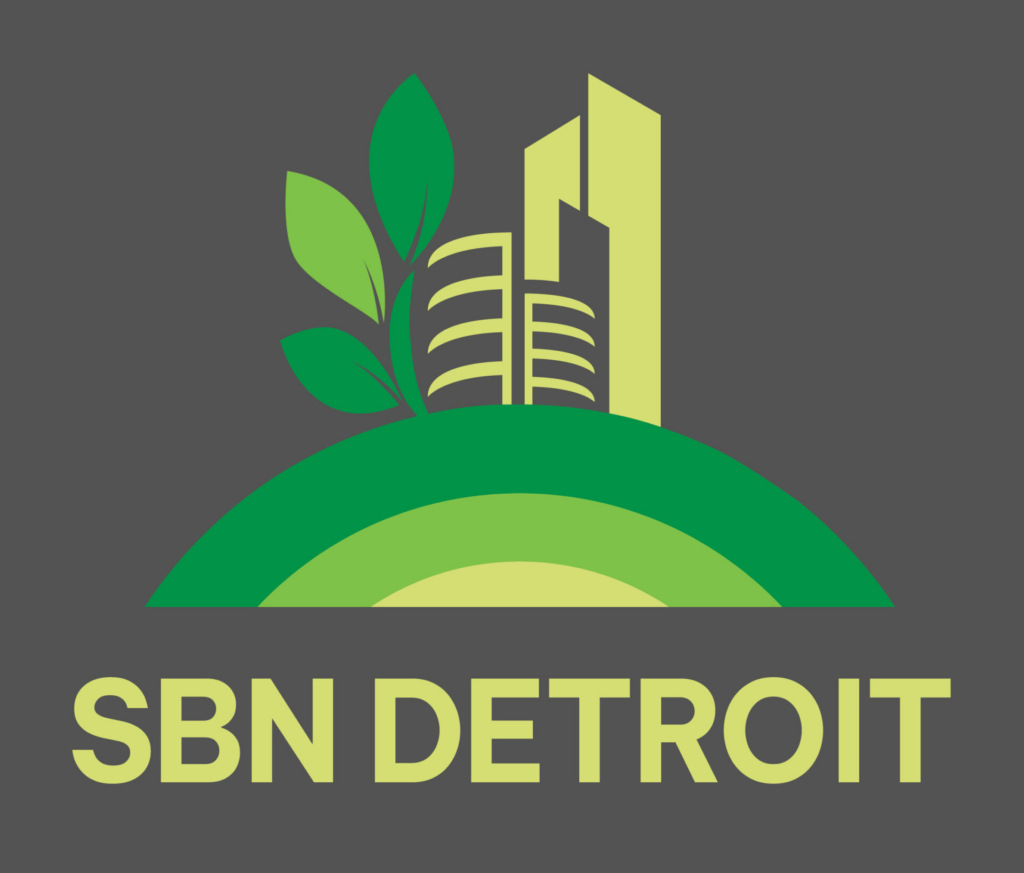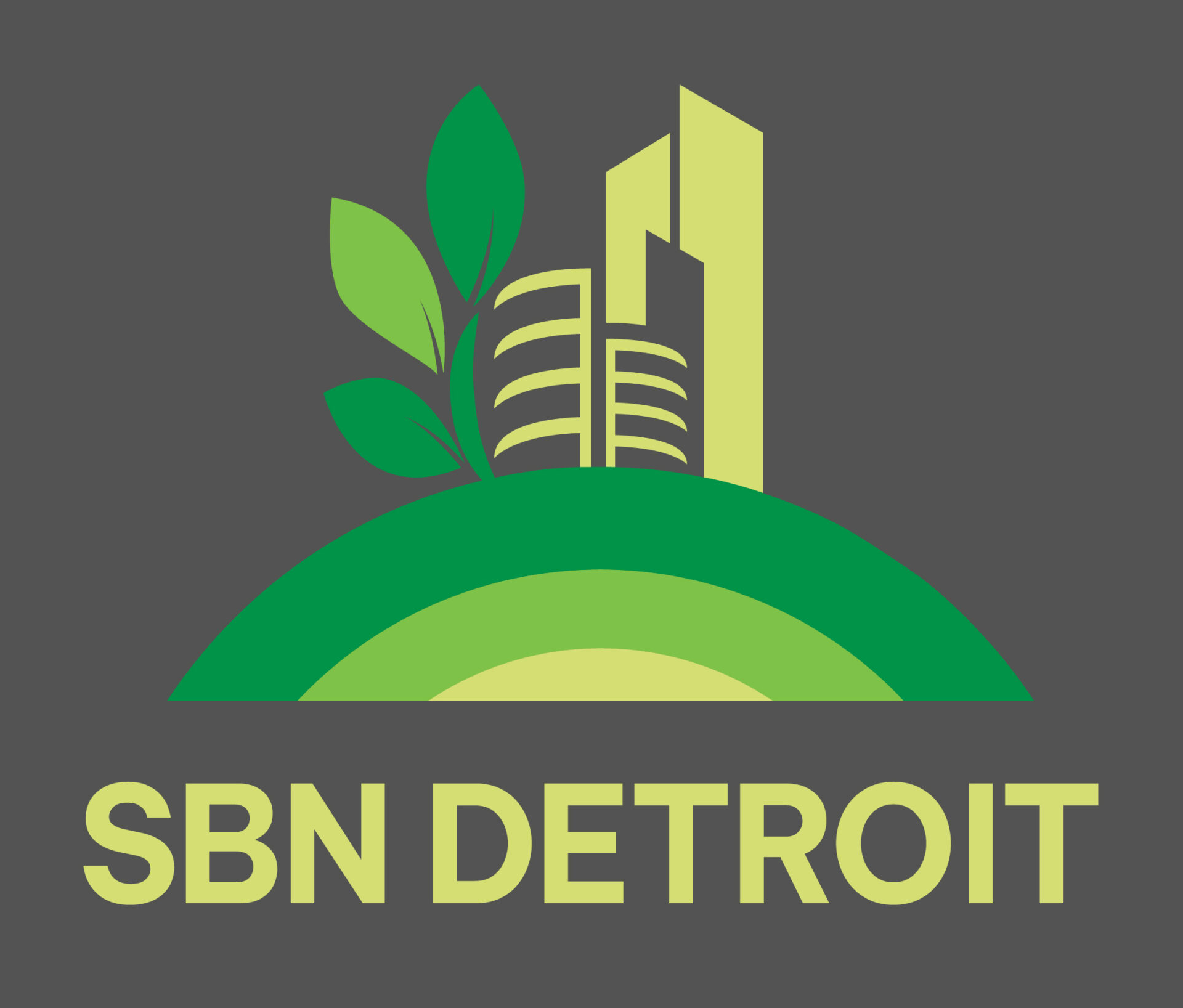Eastern Michigan University – Steam Heat, Solar Panels, and a Recent Bronze STARS Rating
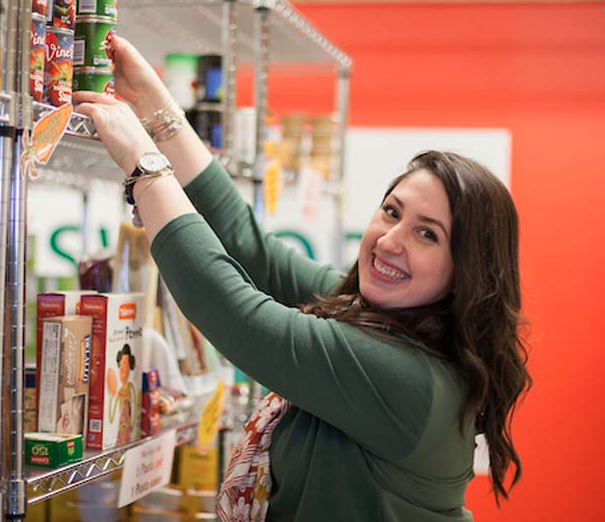
Eastern Michigan University approaches sustainability through a systemized framework and a community-derived mindset that together drive several sustainability initiatives and sustainable infrastructure endeavors on campus. For its sustainability framework, EMU uses the Association for the Advancement of Sustainability in Higher Education (AASHE) and its Sustainability Tracking, Assessment and Rating System (STARS) system and has developed a President’s Sustainability Commission, comprising a broad array of offices and people across the university to develop and execute sustainable practices. SBN Detroit spoke to Tom Kovacs, chair of the president’s sustainability commission and professor of meteorology and climate in the Department of Geography & Geology, about EMU’s sustainability efforts. Q: What are some of the recent sustainability initiatives you’ve put into place? A: First, we are very proud to have completed our STARS certification process and received Bronze Certification. We know that there is room for improvement, which is what we are working on this year. One of the areas we scored lower on is engagement, so to that end, we are building sustainability information into our orientation for 2023 and also are doing a lot more to let people know the sustainability commission exists and inviting people in to help with our efforts. We also very recently partnered with a sustainable mobility solution – Spin Scooters – as the exclusive scooter provider on campus which is helping a lot with student and staff transportation. Another development is a new partnership with EnergySage. EnergySage provides a marketplace that connects interested parties to vetted installers. You simply list your needs, and the various installers provide you with a quote and basically compete for your business, so you ultimately get the best deal. There is also an educational component of EnergySage that offers advisors to help work through the options, as well as a full library of resources on clean energy, and how to live more sustainably. This collaboration helps us improve our STARS ranking and benefits the EMU community so it’s a win-win. Q: How is the university’s heat powered? A: We have a 55-ton cogeneration system that is powered by natural gas and produces electricity and steam. The system supplies approximately 98 percent of the heat and 93 percent of the electricity to the 800-acre campus. The unit will create an annual reduction of 21,305 tons of carbon dioxide (CO2), equivalent to 78.2 million miles driven by an average passenger vehicle – or the preservation of 260 acres of forests. Q: What are some other examples of campus infrastructure focused on sustainability? A: We have solar panels installed at bus stops lining the perimeter of campus and one in the middle of campus. The energy from the sun is stored in the battery assemblies to be utilized during the evening hours to keep travelers safe. We also have a student-led Giving Garden that provides an opportunity for staff, faculty, students, and Ypsilanti residents to grow fresh produce. It’s also used to educate local preschoolers and other students in the area. There is a new composting effort underway, and the garden provides locally grown food to the Swoops Pantry. Q: What is the Swoops Pantry? A: The Swoops Pantry was initiated by a former EMU student and is run by a leadership board of faculty, staff, students, and alumni volunteers. It operates as a sustainable resource for food-insecure students. There is a large stigma involved so they work hard to make things discreet and anonymous. Similar to Swoops, we also recently initiated an EMU Career Closet that provides apparel for students going on interviews. This is a great resource for those who don’t have the means to shop and purchase extra clothing. Q: The dining services in EMU dorms are managed by Compass Group’s Chartwells Higher Education Dining Services. What does this mean in terms of sustainable food practices? A: We shifted to privatized dining about six years ago and work with Compass Group to make dining a more sustainable endeavor. They’ve partnered with local community gardens; they work to incorporate composting; they work to limit waste; and they host a number of events such as Meatless Mondays and Farm to Fork luncheons. They also host a teaching kitchen. We have people from their team who volunteer on our Sustainability Commission, and they will be speaking at our student orientations on sustainability. Q: You also have an office supply program – Partnering for Sustainability. A: Yes, in 2019 we partnered with Office Depot. This allows the EMU community to purchase greener office products and select greener options when available. Recycled bags and reusable plastic totes are also used for delivery versus boxes. Q: What are your areas of focus for the near future? A: We’ll continue all of our efforts in the initiatives we’ve discussed here and seek to enhance them where appropriate. And again, coming off of the recent STARS certification process, our big focus is engaging the community in all of these efforts and more to work toward a greener campus and surrounding area. Be sure to subscribe to our newsletter for regular updates on sustainable business practices in and around Detroit.
Energy Savings Plus Workforce Development Aids Companies, Students
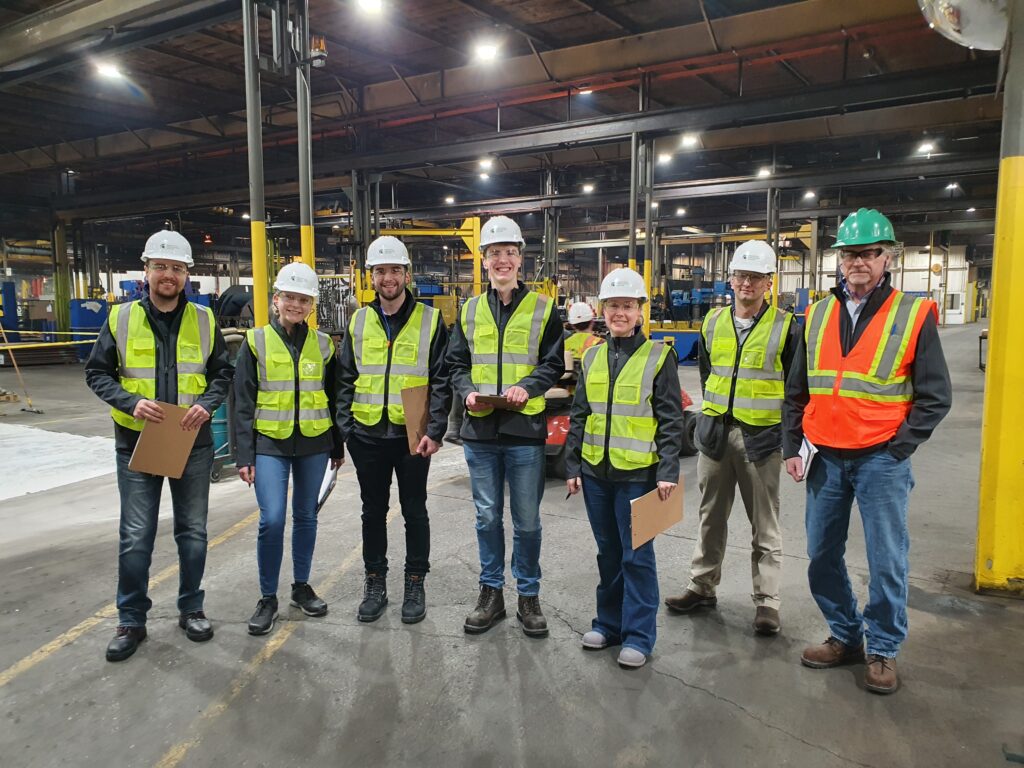
The Industrial Assessment Center (IAC) at Michigan State University, in collaboration with Michigan Technological University and Henry Ford College, offers the 6,200+ small and medium manufacturers (SMEs) in Michigan free technical assessments to help save energy, improve productivity, reduce waste, and reduce carbon emissions. As a result, the institutions are helping to build and expand a knowledgeable and diverse energy workforce pipeline. The scope of topics covered includes: – Energy and water savings – Smart manufacturing – Energy management – Cybersecurity – Resilience planning – Decarbonization – Electrification SBN Detroit spoke to Dr. Kristen Cetin, associate professor at MSU in the Department of Civil and Environmental Engineering. She also is the director of the MSU Industrial Assessment Center. Q: Tell me about the Industrial Assessment Center A: We are a U.S. Department of Energy-funded center focused on two things: First, we support small and medium-sized manufacturers and commercial building owners by providing one-day no-cost assessments to identify opportunities to improve and support their energy and sustainability goals. Our second focus is workforce development. Once students graduate they take manufacturing and sustainability and energy knowledge into the workforce. Some students will go on to jobs in manufacturing or energy, and others perhaps not, but will know to integrate what they’ve learned in whatever career they pursue. We are one of 37 IAC centers across the country, and ours is a collaboration between Michigan State University, Michigan Tech, and Henry Ford College. Q: How did the IAC come to be? A: The Department of Energy program has been in existence since the ‘70s to support energy efficiency, and every five years they do a funding call. That’s where it began. Michigan has not had an IAC for about six years. I moved here from Iowa and was surprised that this manufacturing-rich area did not have an IAC providing this service. So, when the funding call came out we applied for Topic 1, which is the manufacturing side, and Topic 2, which is the commercial building side, pilot program. We knew MSU alone couldn’t easily support all regions of Michigan given how big Michigan is. Michigan Tech is surrounded by important and different industries, so they were a natural collaboration to support the northern part of the state. Collaborating with Henry Ford College as a community college helps us to support the Detroit area, as well as to better reach more commercial buildings. This collaboration also enables broader diversity of students to participate in terms of training. So we partnered, and it’s been going very well to date. Q: What does the assessment process involve and how much support do you offer outside of the assessment? A: The assessment process begins with a thorough analysis of utility bills, followed by a one-day in-person assessment. Sometimes we leave datalogger equipment to continue to monitor the operation of energy-consuming systems after the assessment. Once the assessment and analysis are complete a full report is written up including detailed recommendations, estimates of energy efficiencies, and associated costs. We then follow up about a year after the assessment to see what was implemented, if there were efficiencies gained, and receive feedback on what was actionable and what was not. This helps us figure out what we can do better and what kind of impact each assessment has made. In terms of supporting the implementation of our recommendations, we do a few things. If appropriate we contact utility companies to see if there are rebates or incentives that fit well. We also connect interested companies to the Better Plants program, which can help facilitate larger-scope initiatives and provide ongoing support beyond our assessments. And finally, a new development that is just becoming available is a matching grant program to support any company that completes the assessment. Part of the Bipartisan Infrastructure Law implementation, this is a new grant that will match company funds to support implementation of the changes recommended in the post-assessment report. Q: Are all assessments the same or do they vary depending on the building? A: We typically have one day to do them, so to that end we follow a similar schedule and format. But our recommendations and areas of focus vary depending on what kind of manufacturing the company is doing, or what kind of commercial building it is. We do a walk-through in the morning and obtain information about all of their systems in place. At lunch, we brainstorm about areas of improvement, and then we split into groups to dive deeper into those areas throughout the afternoon. Q: How many assessments are done annually? A: We do 30 assessments per year, approximately 20 of which are manufacturers and ten commercial buildings. Q: What is the role of the students? A: This is very much a student-led program. Students are the main point of contact with each of the companies we work with, the lead in the discussions, the lead in data collection, and all aspects of the program. There is a student lead for each assessment, and that person is in charge of setting up the logistics and takes the lead during the assessment. They also present the report and recommendations to the companies we work with. They also lead the student group in creating the report draft review, which is then reviewed and approved before sharing with the company. The faculty and staff in the IAC help to support and generate ideas, provide technical expertise, as well as review recommendations and overall reports. Our student groups range from approximately three to eight per assessment. Approximately 90% of the students are undergraduates from a variety of engineering and non-engineering backgrounds. There is also a three-credit training course that students in the IAC take during their first semester in the program. All students are paid for the work they do, including training. Q: What does it mean to have this practical hands-on experience? A: I think this hands-on training is even more valuable than taking classes. It’s invaluable – this
Joe Louis Greenway Project Aims to Transform Abandoned Rail Corridor into 27.5-Mile Recreational Pathway
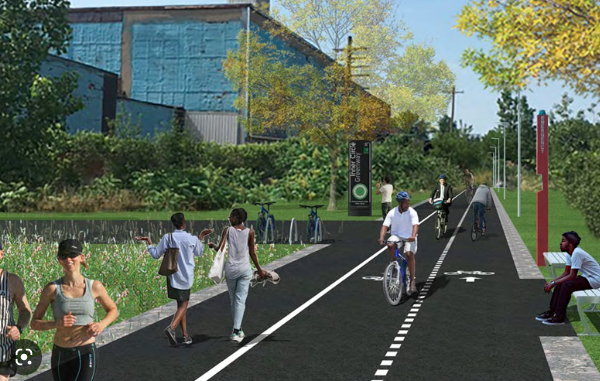
The Joe Louis Greenway is a 27.5-mile pathway that will connect 23 neighborhoods and the cities of Detroit, Hamtramck, Highland Park, and Dearborn to each other and to the Detroit riverfront, Dequindre Cut, Belle Isle, pedestrian/cyclist crossings at the Ambassador and Gordie Howe International bridges, and other trails. Upon completion, more than 40,000 residents will be able to walk to the greenway within 10 minutes. The project is based on a Framework Plan funded by the Ralph C. Wilson, Jr. Foundation and shaped by voices from the community. The General Services Department team led 14 community meetings and attended more than 40 other events and meetings to gather feedback from residents to create the plan. The project is being recognized for its focus on inclusion, and for bringing a wide range of voices to the table while fostering citizen advocacy and activism. In October, The American Planning Association awarded the 2022 Advancing Diversity and Social Change in Honor of Paul Davidoff Award to the project. The greenway has received significant state and federal funding. And earlier this month, the city of Detroit, Detroit Riverfront Conservancy, and Joe Louis Greenway Partnership announced the Unified Greenway Partnership, an alliance that will raise funds to complete the Detroit Riverfront from Belle Isle to the Ambassador Bridge, build the Joe Louis Greenway around the city, and endow both projects for long-term management. SBN Detroit spoke to Brad Dick, COO for the City of Detroit, about inclusion, the use of space for social justice, and the greenway’s potential impact on area businesses and new business development. Q: There is a significant amount of funding from different entities coming in for the greenway. What are your thoughts on the ‘investment in urban spaces’ and the implications this has on small businesses in the area, as well as the opportunities this represents for new business development? A: The Joe Louis Greenway (JLG) is a historic investment across multiple cities and neighborhoods, including Detroit, Highland Park, Hamtramck, and Dearborn. The greenway will transform a blighted, abandoned rail corridor into a beautiful park running through Detroiters’ backyards. To date, the project has removed more than 68,000 cubic yards of debris (which could fill 22 Olympic-sized swimming pools) and nearly 23,000 old, illegally dumped tires from the area, and is investing in permanent infrastructure and beautification that enhances the quality of life and provides equitable access to public resources. Investment in urban spaces brings communities together and provides economic opportunities for local entrepreneurs and businesses to grow and expand, creating jobs, and economic growth, as well as wealth-building opportunities for our residents along the greenway itself and in adjacent communities. Our goal is to make this greenway a destination, which will attract people from all over the region, creating a strong market for existing and new small businesses. The greenway will also provide safe routes, and comfortable connections for both employees and business owners to get to work. Q: How has this project established itself as a model for neighborhood stabilization and for addressing community-based issues as it pertains to social justice? A: Residents have been at the core of the planning process for the Joe Louis Greenway, and hundreds of Detroiters attended community meetings held as part of the Joe Louis Greenway Framework Plan. The Joe Louis Greenway Citizen Advisory Council helped guide the planning process and continues to advocate for the Greenway. The group of dedicated individuals that guided the Framework Plan represented all seven of Detroit’s Council Districts, as well as residents of Highland Park, Dearborn, and Hamtramck, which also touch the Greenway. Joe Louis worked tirelessly to advocate for the rights of Black Americans and to promote social justice in the United States. The Greenway is more than a tribute to his legacy. It celebrates Joe Louis as a role model and as someone whose values can guide this project and the Detroiters it brings together. Q: What are the equitable economic development benefits of this project? A: The JLG is about access – including access to opportunity. Intentional planning, outreach, and action will create economic opportunity for residents in every neighborhood that the Joe Louis Greenway touches. The economic development benefits will include blight reduction and beautification, housing stabilization, preservation of affordable housing, job training, and career opportunities, existing and new small business support, and light industrial development opportunities. The Neighborhood Planning Study, led by Planning and Development Department, will continue the dialogue with the community and focus on opportunities for community and economic development along the Greenway. Q: How will the Neighborhood Planning Study support social justice as well as economic and business/job opportunities? A: As Mayor Mike Duggan has said, the impact of this greenway will extend far beyond the boundaries of the path itself, creating opportunities for Detroiters to thrive. When complete, the greenway will generate jobs and affordable housing opportunities, and ease mobility barriers that have challenged Detroiters for decades. It also will help Detroiters build generational wealth for homeowners by increasing their property values through the beautification and economic investment that the greenway will bring to their neighborhood. Throughout the planning process, residents voiced a need to heal long-standing urban trauma, particularly concerning urban renewal that ultimately displaced Black residents who called those neighborhoods home and whose businesses were torn down. By acknowledging that past trauma, promoting dialogue, and providing new opportunities for healing, the greenway can be a place where Detroiters advance a better understanding of racial justice. Q: How is the greenway helping to build a more sustainable Detroit? A: The design of the greenway incorporates stormwater management to reduce flooding impacts, native meadow plantings to provide bird habitat, and trees throughout to provide shade and help with air quality. Sustainability, however, goes much further than just the environment. This project will impact many facets of sustainability, including public health, economic development, neighborhood stabilization, park access, and connectivity. The Framework Plan ensures that the Joe Louis Greenway will transform the infrastructure that previously divided neighborhoods into one that unites community and reconnects natural systems, catalyzes economic redevelopment, and supports a resilient social network. The
Working at the intersection of Business, Education, and Research for a More Sustainable World
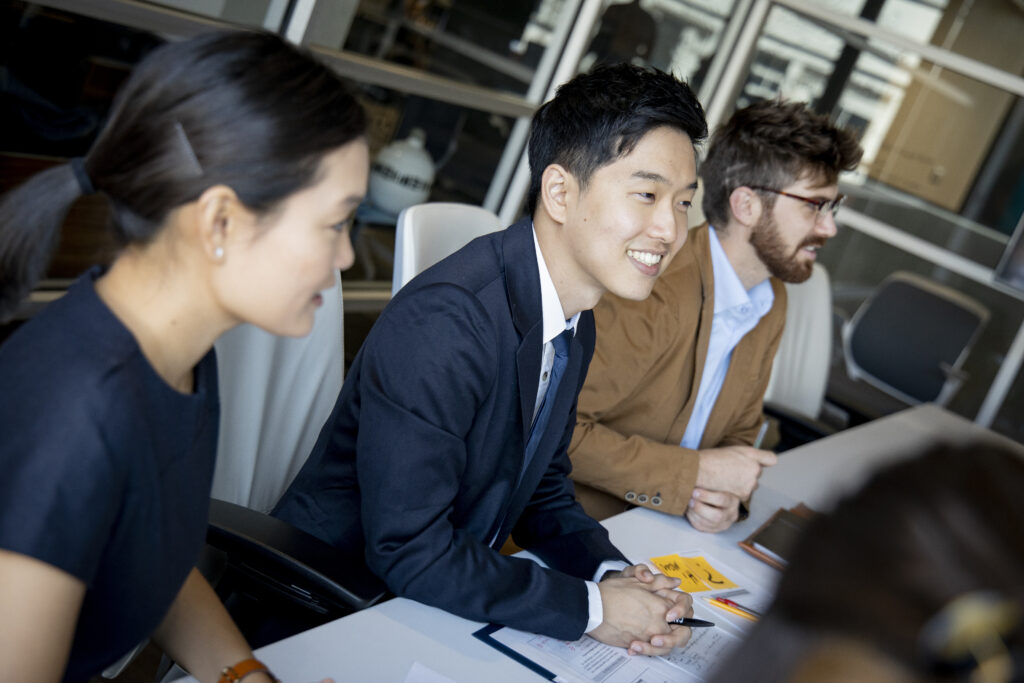
The Erb Institute at the University of Michigan has a mission to create a sustainable world through the power of business. The institute is a partnership between the Ross School of Business and the School for Environment and Sustainability, where students and business partners work together to fulfill this mission. What does this translate to, how does it work, and what impact does it have on Southeast Michigan Businesses? We talked to the Erb Institute Managing Director Terry Nelidov to find out more. Nelidov began his career as a US Peace Corps Volunteer in Paraguay in the early 1990s. Later he served as founding director of INCAE Business School’s Business Leadership for Sustainable Development Network in Latin America, as General Manager for AmeriCasas (a startup land-development company in El Salvador), and then country representative for Catholic Relief Services in Peru. He holds a BS in Industrial Engineering from Stanford University and an MBA from IESE Business School in Spain. Q: The mission of the Erb Institute is to create a sustainable world through the power of business. How do you approach this? A: Yes, this has been our mission for over 25 years and remains our mission today, although our areas of focus have expanded and evolved. When Fred and Barbara Erb endowed the institute in 1996 the focus was on two areas: teaching and research. Over the years the program has evolved to encompass applied research and impact. Meaning we now work to translate research results into practical management tools, case studies, and frameworks for business leaders to put into practice. So today, we have expanded how we think about the work we do into three main pillars; research, teaching, and business engagement. The latter challenges us to be involved in the global dialogue on sustainability and to bring back new questions to inform our research and teaching, while actively sharing the thought leadership of our faculty and students to inform that global conversation. One way we do this is by leading and taking part in global sustainability events such as the SB 2017 and 2019 conferences, the Innovation Forum UK, and more. The Erb Institute is so much more than a teaching institute – it’s about making an impact with businesses and nonprofits focused on sustainability through teaching and research and then sharing the work that comes out of that to scale up our impact in Michigan, across the United States, and beyond. Q: How are you engaging with businesses? A: Great question and my best response would be simply two examples. Recently we hosted the Michigan Business Sustainability Roundtable (MBSR) to bring together senior Michigan business leaders from Kellogg, Dow, Meijer, and others committed to working toward transformational change in social and environmental performance and asked what challenges they have in achieving their goals at the policy level, and how we could support them in advocating together for climate change and racial justice in Michigan. This was a six-month process. We are looking to deepen our connections with policymakers and advocates at the state level and use our collective voices to raise the bar on business, sustainability, and justice in Michigan. The second example involves a groundbreaking research project with Ford Motor Co. In 2018 Ford came to us with a simple but intriguing question, “How can we measure the impact of smart mobility on the human condition?” We launched a two-year research project, co-hired a postdoctoral research fellow, and created the Ford Model of Human Progress. What was particularly exciting about this initiative was that a year later, HP Enterprise attended a Sustainable Brands event where they heard about the model and then took it back to Silicon Valley and began adapting Ford’s model to HP Enterprise’s work in the tech industry. Q: What sustainability issues do you focus on beyond the environment? A: While climate change, water, biodiversity, circular economy, and plastics remain at the forefront, the scope of sustainability has expanded to include a range of social issues, even the very concept of justice and the role of business in a just society. Businesses are being called on to play a significant role here…to support social issues, such as access to education, access to health, and employee engagement and well-being. So, we’ve expanded with this evolution. Indeed, social justice is a significant focus area within our new five-year strategic plan, which focuses on preparing “architects of change” who can work at the intersection of business, sustainability, and justice. Q: How do you think the graduates of the Erb Institute impact businesses? A: We have alumni working in leadership positions in 17 countries. I can point to three examples of how they are making a significant impact. The first is Monique Oxender. While still studying at the Erb Institute, Monique took an internship at Ford and then a full-time position, helping to create their human rights function in the early 2000s. She is now chief sustainability officer at Keurig Dr Pepper, a global platform for sustainability impact. All of that began with her Erb experience. A great example of nonprofit leadership is Laura Rubin, our first Erb graduate. She worked on the Huron River Watershed Council for 25 years and is now a recognized leader in the Midwest and Great Lakes Region in water crisis and habitat issues. A third example is Rep. Joe Tate, who went into public service and politics and was recently elected as the first Black speaker of the Michigan House of Representatives. Interestingly, he was also a USMC Veteran and a former NFL offensive lineman! Q: How do you think the work you are doing at the Erb Institute impacts businesses in general? A: First, the students in class today will be in leadership roles in 10 to 15 years. Second, we make an impact through the power of our ideas and the research of our faculty. The innovations that come out of working with students, researchers, and professors are the ideas that are shaping sustainability going forward. Q: What does the
Michigan Green Communities is Moving Community Sustainability Initiatives Forward
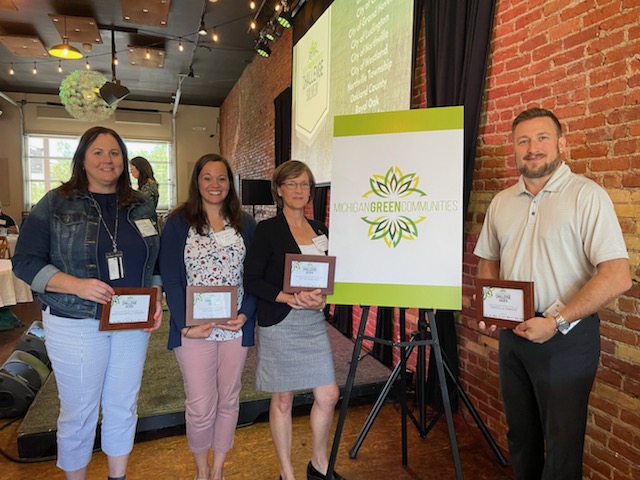
Established in 2009, Michigan Green Communities (MGC) is a statewide sustainability assistance program that works to embed sustainability into municipal and county operations. MGC is a collaboration and partnership of the Michigan Economic Development Corporation (MEDC); the Michigan Department of Environment, Great Lakes, and Energy (EGLE); the Michigan Department of Health and Human Services (MDHHS); Michigan Department of Transportation (MDOT); the Michigan Department of Natural Resources (MDNR); the Michigan Association of Counties (MAC); the Michigan Municipal League (MML); and the Michigan Townships Association (MTA). It is led by a 15-member steering committee from the partners and local governments, including West Bloomfield Township, Ann Arbor, and Canton Township. SBN Detroit spoke to Danielle Beard, Michigan Green Communities coordinator, to find out more about the work it is doing to impact sustainability initiatives in Southeast Michigan and throughout the state. Q: What is Michigan Green Communities? A: Michigan Green Communities (MGC) is a sustainability benchmarking, networking, and technical assistance program for municipalities and counties in Michigan. The goal is to embed sustainability in local government operations and promote innovative solutions at the local, regional, and state level. The main component of the program is the annual MGC Challenge (that’s the benchmarking piece) where communities track in their online accounts whether they’ve completed or are in progress on a set of action items and log metrics (click here for the full list of action items and metrics). Communities that participate in the MGC Challenge have access to free support and technical assistance programs through the MGC program and EGLE’s Catalyst Communities program. Q: What is the impetus behind MGC? A: There are a lot of benefits to embedding sustainability into municipal and county operations. Cost savings is a big driver for communities as they can slash their energy and water bills, helping them control the cost of their operations. Additionally, Michigan’s weather patterns are changing drastically, and local units of government play a large role in adapting our society to these changes. Local policies and decisions can help to mitigate the effects of heat waves, severe snowstorms, massive rain events, and more. Multiple state agencies interact with communities on different areas of sustainability. The MGC program was designed to bring those agencies together to collaborate on how to best meet the needs of local governments. And because local governments are also on the steering committee, they’re providing feedback to state agencies on the challenges they face to inform the agencies’ work. Q: What areas of sustainability are you focused on? A: The Michigan Green Communities program focuses on embedding sustainability into local government policies, programs, and operations. The MGC Challenge action item categories outline this best: Planning for Inclusive and Lasting Impacts Climate Resilience and Adaptation Energy Efficiency & Renewable Energy Responsibly Managing Materials Sustainable Land Use & Economic Development Improving Health Outcomes Protecting & Conserving Water Resources Support Clean & Inclusive Mobility Inspire & Mobilize Residents Q: What examples can you give of the work that’s been done? A: Since it was started in 2009, over 100 communities have participated in various ways and taken steps to advance sustainability in their communities. In our 2021 challenge: 45 communities participated representing 3.6 million Michiganders. MGC awarded 12 bronze certifications, 10 silver certifications, and 23 gold certifications. Over 1,500 sustainability actions were logged as complete, and over 1,000 were logged as in progress. The MGC Challenge added a set of metrics to track data like GHG (greenhouse gas) emissions, community water use, and more. We launched the MGC Accelerator Cohort to advance sustainability practices in bronze & silver MGC Challenge communities. The current challenge is now live, and communities can report on their sustainability actions through the 2023 calendar year. Q: What does the future look like for MGC? A: In short, the future of MGC will involve bringing more technical assistance, resources, and templates to communities to help them expedite resiliency strategies and decarbonize their operations. This will also involve more networking among communities so they can learn from one another and not reinvent the wheel. We launched the MGC Accelerator Cohort in January 2023, which is a group of bronze and silver-certified MGC Challenge communities that come together as a group to address sustainability issues. The first topic that we’re focusing on is green infrastructure. Many communities in Michigan have been dealing with flooding and water runoff causing pollution, fluctuating shoreline water levels, and severe weather events. Green infrastructure solutions can help to address these issues in a way that protects man-made infrastructure and natural features. The group will meet monthly with subject matter experts and consultants that MGC has hired to share ideas, draft ordinance language, and identify potential implementation opportunities and funding for green infrastructure projects. After the green infrastructure module, the cohort will select another topic to work on in a similar style. The cohort is open to any community that has taken the previous Michigan Green Communities Challenge or plans to participate in the current Michigan Green Communities Challenge. This work is being funded by the MEDC. Be sure to subscribe to our newsletter for regular updates on sustainable business practices in and around Detroit.
Consumers Energy’s PowerMIFleet Program Grows to 50+ Companies
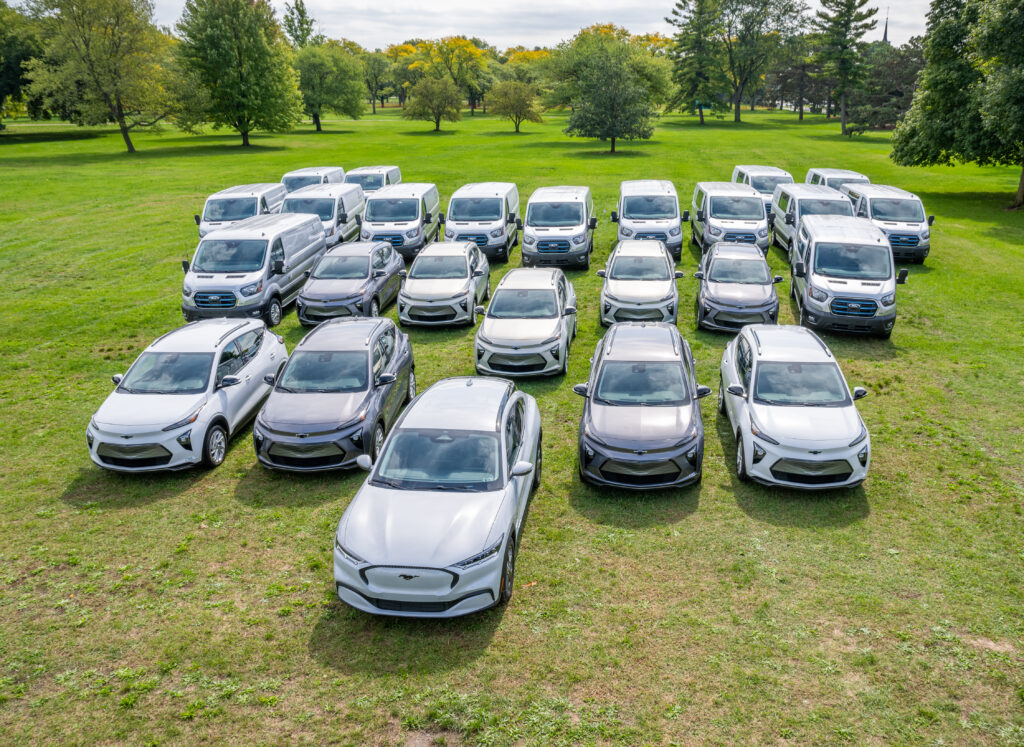
Consumers Energy launched its PowerMIFleet program 19 months ago to augment its existing PowerMIDrive. The latter program, launched in 2019, is targeted to smaller users and offers lower electric rates for off-peak charging for drivers and will provide rebates for residential, business, and public charging stations. More than 2,700 have been granted so far. PowerMIFleet was launched in mid-2021 to build on that program by connecting businesses, large institutions, local governments, and school bus fleets with planning resources, expert guidance, and financial incentives to easily and cost-effectively transition to electric vehicles. One of those large institutions, Michigan State University, is deep in the throes of transitioning 369 vehicles in its fleet of 1,200 internal-combustion vehicles to electric vehicles over the next decade and is working with Consumers Energy and the PowerMIFleet program to do so. SBN Detroit spoke with two individuals deeply involved in MSU’s process, beginning with Jeff Myrom, Consumers Energy director of electric transportation customer programs, and Adam Lawver, director of Campus Services Infrastructure Planning and Facilities at Michigan State University, to gain insights into the process and how it works for Michigan businesses. Q: Jeff, first tell us about the PowerMIFleet program. Myrom: PowerMIFleet is a program designed to help business owners, municipalities, and educational institutions charge off-peak to reduce operating costs, eliminate emissions, and simplify vehicle maintenance by transitioning to electric vehicles. This is a program for those looking to electrify multiple vehicles and potentially a variety of vehicle classes. This, along with PowerMIDrive, is aimed at gaining insights and learnings and then sharing those learnings with different sectors so we can optimize success in the future, and it supports the statewide goal of having 2 million EVs on our state roads by 2030. Q: How long have these programs been in existence? Myrom: PowerMIDrive has been in place for a little over three years. We are getting ready to convert the residential portion of this pilot to a permanent program. PowerMIFleet launched in June of 2021 and has been so successful that it’s now fully subscribed. Q: What is involved in the PowerMIFleet Pilot Program? Myrom: Essentially there are three phases. In this first phase, we are working with fifty customers across a wide geographic base within different industries and sectors. We conduct full assessments regarding their fleets and then develop a five-year plan for conversion and infrastructure. This longer-term plan allows us to build for the future now versus having multiple infrastructure upgrades over time. In Phase Two we move forward with EV infrastructure development and the purchase cycle begins for the customer. Phase Three involves taking a look at the actual experience with electrification to see if the infrastructure is adequate and circling back on lessons learned. For PowerMIFleet, this will take place in 2024. Q: Who are you working with through PowerMIFleet in addition to MSU? Myrom: We are currently working with over 50 customers, including several school districts. For example, Jackson Public Schools are looking to acquire 21 electric school buses. Homer Community School District is bringing on seven electric buses. We are working with Domino’s Pizza on their rollout of 800 GM Chevy Bolt electric vehicles now. We will publish our lessons learned from the vehicle electrification assessments starting in Q1 of 2023 and move from there. Q: What challenges do you face? Myrom: Vehicle availability and costs are a challenge. We recognize that until the supply chain is improved this will be the case. Another potential challenge for those with large fleets is adopting time-of-use rates. Usage across the state is highest between 2 p.m. and 7 p.m. We are offering several different time-of-use options to minimize costs for businesses and help alleviate this challenge. A good example of this is the work we are doing with Michigan State University. The PowerMIFleet program is providing rebates to MSU toward their charger installation costs, and we’ve supported the grid upgrades needed, as they prepared to take delivery of forty new EVs in September. Michigan State University is clearly a leader in fleet electrification, and one of the first movers in the PowerMIFleet pilot. Partnering with a leading educational institution like Michigan State University is a real boost to our fleet pilot learnings. Q: Adam, what should we know about your conversion to electrification with Consumers Energy and PowerMIFleet? Lawver: As part of our strategic plan goal of achieving climate neutrality by 2050 and reducing greenhouse gas emissions by 50% from its 2010 baseline, we are converting 369 internal combustion engine vehicles to fully electric vehicles over the next decade. The conversion will decrease the university’s overall carbon footprint by 18,945 metric tons of carbon dioxide long-term – the equivalent of planting 312,584 trees. In September 2021, we connected with Consumers and its PowerMIFleet program. Together we assessed our 1,200 vehicles and built fleet electrification roadmap. Now, one year later we’ve received all 40 vehicles of the initial order and are in process of connecting charging stations. Q: What manufacturers are you working with to build your fleet? Lawver: We selected different types and manufacturers, according to what they’d be used for. Some vehicles are used to move people short distances, some are utility vehicles, some are used by staff to travel around the state for meetings, and so forth, so they all have different uses and needs. So far, we have purchased a combination of Ford E-Transit Vans, Ford F150 Lightening Electric Trucks, Ford Mustang Mach-E’s,Chevy Bolts, and Tesla Model 3s. Q: What can businesses learn from your current experience of electrification and working with PowerMIFleet? Lawver: I think small businesses with a few delivery vans up to entities with large fleets would benefit from completing a fleet analysis and considering electrification. I think you first need to look at the total cost of ownership of your vehicles. Each business owner needs to assess that and evaluate it over their fleet and see if there is a good alternative to convert to decrease their carbon footprint. Then, build a roadmap for
DTE Talks About the Challenges and Opportunities in Building and Adopting EV Infrastructure
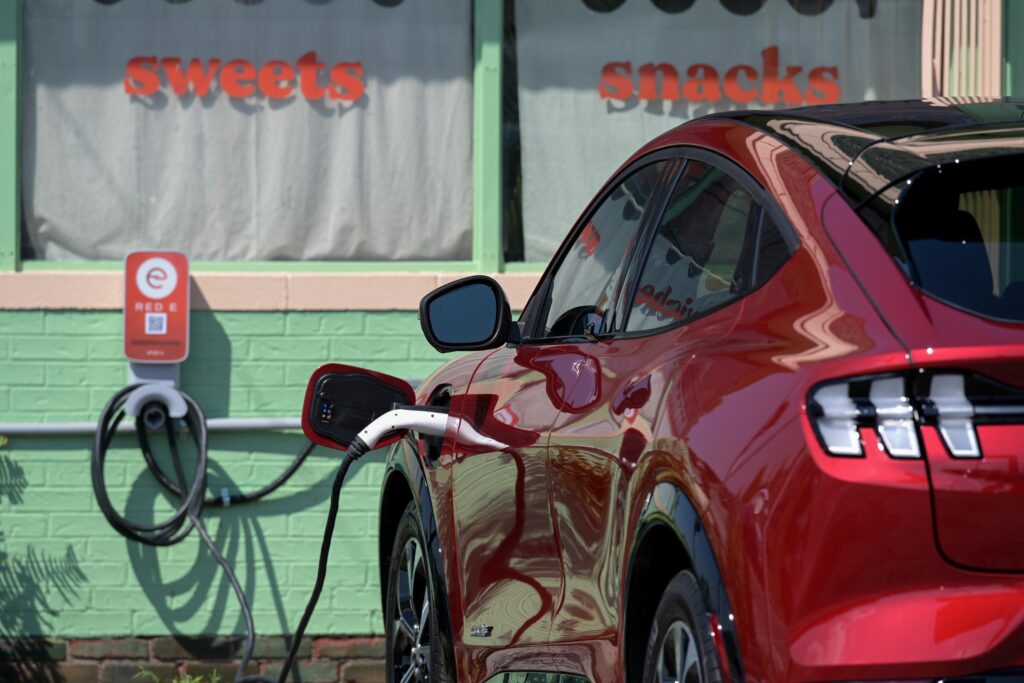
Widespread electric vehicle (EV) adoption is crucial for achieving climate goals. However, the pace of EV adoption varies significantly across different income sectors, markets, and geographies. There are significant barriers to EV entry that are hindering the overall pace of electrification including lack of charging infrastructure (range anxiety), charger access disparities, and affordability. Addressing these challenges is critical. SBND talked with Tony Tomczak, vice president of electric sales marketing for DTE Energy, about the company’s initiatives and partnerships designed to build infrastructure and capacity. Q: Is growth in EVs outpacing charging stations? How is DTE is working to address this? A: Yes, at the current rate of adoption, EVs are outpacing EV chargers. From January 2020 to October 2022, public EV chargers in Michigan increased from 1,070 to 2,300 and EVs increased from 21,500 to about 44,500. We recognize that access to EV chargers across the state can be a barrier for many when deciding to go electric. We offer businesses thousands in rebates to incentivize them to install EV chargers at their business, including retail, workplaces, multiunit dwellings, and schools. In the Q4 2022 report that we filed with the MPSC, we shared that we have approved 2,300 residential Level 2 EV chargers, 1,130 Level 2 rebates, and 120 CFC rebates. You can learn more about our business rebate program here. Q: A significant barrier to entry in EV ownership is range anxiety. What are the goals to convert drivers to EVs and the infrastructure in place to support them? A: The current charging infrastructure is not enough. While the biggest barrier to EV ownership is still the upfront vehicle and charger cost, range anxiety is also a barrier many of our customers face. The State of Michigan has an aspiration to deploy enough charging infrastructure to support two million EVs on the road by 2030. While we’re still a long way from that volume of EVs, in the meantime DTE is facilitating charging deployment through our EV programming and other partnerships to leverage available funding. Q: Michigan will receive a $110 million grant from the National Electric Vehicle Infrastructure (NEVI) Formula Program, as part of the Federal Infrastructure Law. There is a plan in place to install four 150 kilowatt – or greater – vehicle chargers spaced no more than 50 miles apart along each of the state’s designated Alternative Fuel Corridors, which include all seven of the state’s major highways that will serve as the backbone of Michigan’s vehicle charging network. These include I-96, I-75, I-696, I-275, I-69, I-196 and I-94. What is DTE’s involvement with this? The plan, and timing, is this enough? A: The plan is to closely collaborate with the Michigan Department of Environment Great Lakes, and Energy (EGLE) to review and identify ideal sites that are eligible for NEVI funds and which can be layered with our EV programming incentives and rebates. Ideal sites are defined as well-lit areas that are publicly accessible 24/7, and usable by people with disabilities. Preference will be given to sites that have amenities for the EV drivers (e.g., food, bathroom, seating indoors) within 0.25 miles of walking distance on pedestrian-friendly routes and are within two miles of driving distance of an interstate, U.S., or state highway. We will be participating with the state’s committee to review and vote for NEVI projects. The EGLE request for proposal (RFP) solicitation to organizations that are interested in receiving NEVI funding is scheduled to go out this winter, and the committee will come together sometime in Q2. NEVI projects will begin to be awarded later this year. Additionally, since DTE’s Charging Forward rebated make-ready model leverages other funding by design, we will continue to collaborate with EGLE’s Charge Up Michigan team. Since launch, we have approved 48 Charging Forward sites which will also receive a combined $1.3 million in funding from the Volkswagen (VW) settlement funds that EGLE is managing. There is another potential ~$5 million in funding currently going through the Charge Up Michigan evaluation process, and DTE will continue to work closely with state agencies as the process for NEVI funding distribution becomes clearer. Q: According to the Michigan Future Mobility Plan, the state will install 100,000 vehicle chargers to support 2 million electric vehicles by the year 2030. To meet the goal over 12,000 vehicle chargers would need to be installed per year. Is this possible? What is DTE’s involvement? A: Similar to our involvement with the EGLE program, DTE partners with the Michigan Future Mobility Plan by facilitating charging deployment through our EV programming and leveraging their partnership for additional available funding. To date, we have installed over 780 public chargers within the communities in our service territory and will continue to do so with the continued EV programming rebates and incentives. Q: Michigan is quickly becoming a center of U.S. battery manufacturing. What are the job implications of this? A: We are excited that many electric vehicle automakers and suppliers, including battery manufacturers, are continuing to call Michigan home. One of the many benefits of driving electric vehicles is knowing that the fuel is made in Michigan, by Michiganders, which stimulates our local and state economies. The significant amount of charging infrastructure required is creating jobs for local installers and maintenance providers. The DOE has the JOBS EVSE tool which allows users to estimate the economic impact of EVs, including charging infrastructure, job creation, and local spending. Q: What can you tell us about your partnership with Volta Charging which received a Michigan Mobility Funding Platform grant and other programs we haven’t talked about so far? A: Our portfolio of EV programming is designed to reduce the barriers to EVs for our customers. Our partnership with Volta was just one example of bringing our goals to fruition and enabling equitable access to EVs by deploying chargers in lower-income or rural communities that have not seen as much investment to date. Volta chargers are unique since they also act as a platform for education with their
Helping Detroiters Create New Businesses for a More Equitable World
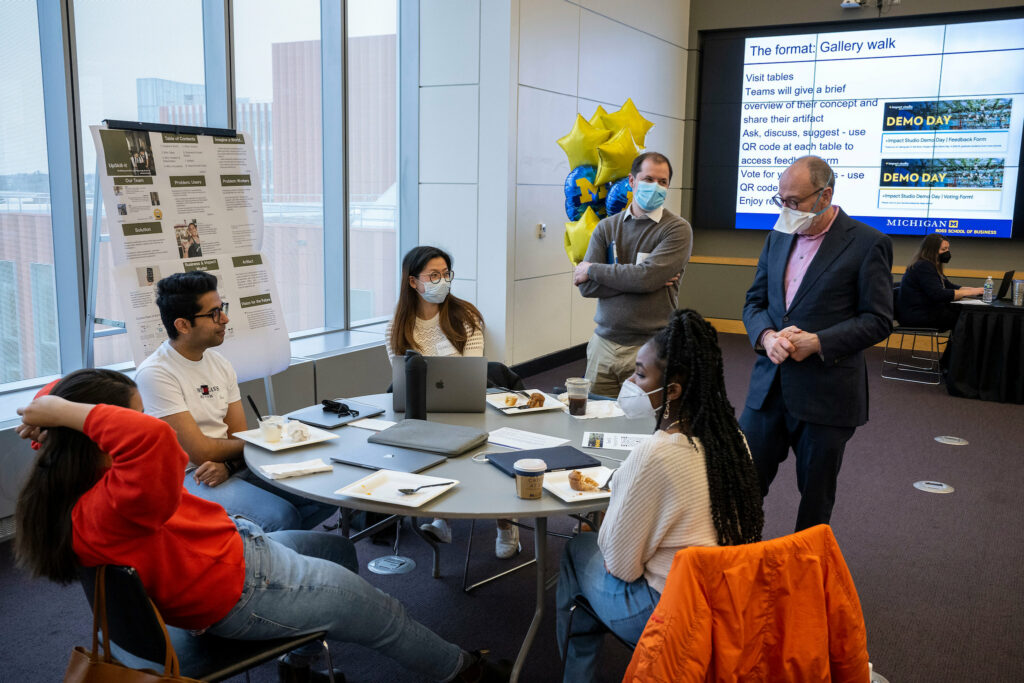
Jerry Davis, Gilbert & Ruth Whitaker Professor of Management and faculty director of Business+Impact at the Michigan Ross School of Business, believes that with more available government funding than in the past, more entrepreneurs and businesses in Detroit are in a position to build equitable community wealth. Davis, who received his Ph.D. from the Stanford University Graduate School of Business and taught at Northwestern and Columbia before moving to the University of Michigan, has published six books and dozens of articles in academic and business publications. His latest book is Taming Corporate Power in the 21st Century (Cambridge University Press, 2022). His focus is reshaping and developing businesses to be drivers of social and environmental change. SBN Detroit spoke to Davis about his perspectives, the new graduate-level class, and what it ultimately means to Detroit businesses. Q: Tell us about your concept of reshaping businesses into drivers of change. A: I think there are two ways we can orient businesses toward a more equitable sustainable future. First, we can take an existing business and reform it from the inside. This is often done by intrapreneurs. Second, we can create new enterprises that are built right from the start. My overall concept is that businesses can address bigger challenges than just shareholder value through reform or fresh starts. There are so many new building blocks available to businesses today that we can leverage to not only make money but also to begin to address the racial wealth gap, generational inequality, and the green energy transition. Q: What do you mean by building blocks? A: Technology has fundamentally changed the building blocks for creating an enterprise in the last fifteen years. There are dozens of new ways to raise capital that didn’t exist ten to fifteen years ago. There are new ways to find distribution channels, new ways to work with suppliers and labor, new legal formats, and the list goes on. Q: How do the United Nations Sustainability Development Goals inform your work? A: Since the inception of the Sustainability Development Goals in 2015, I’ve used them as a GPS of sorts for orienting what businesses can do to contribute to social benefit. I’ve integrated this into my teaching and writing and research. Drilling down …If you had to pick one threat we are facing on a global basis that businesses can work better to address – and that creates business opportunities – it’s the green energy transition. This is the thing in our generation that we need to accomplish starting today. And it’s impossible to address it with government action only. There is a central role for businesses to play in bringing about this transition. And with the Inflation Reduction Act and Justice40 in place, there is no better opportunity to build green enterprises than right now. Q: What are some of the opportunities provided by the Inflation Reduction Act? A: As I said, the need for the green energy transition has never been greater. It is imperative for our species. At the same time, we have the Biden-Harris administration launching the IRA, which creates huge incentives to electrify and transition to green energy. There is an astounding amount of money being allocated to homeowners and renters and drivers to help make this transition. You can simply go online and see the offerings – switching from a gas furnace to a heat pump offers free cash. There are huge tax benefits to electric vehicle owners. And low-income brackets receive even more benefits. I highly recommend the “Rewiring America” website. From a business perspective, this is an opportunity like never before. Businesses that provide services around transitioning to green energy stand to prosper greatly through this funding. These opportunities represent a chance to build generational wealth. Q: Can you explain more about how the act supports generational-wealth building? A: Detroit has been hit hard in several ways … the mortgage crisis, residential flight, municipal bankruptcy, and the list goes on. These have robbed people of opportunities to create prosperity for themselves and their families. So, this funding represents an especially well-placed opportunity for cities like Detroit. According to the White House, the Justice40 initiative means that “40 percent of the overall benefits of certain federal investments flow to disadvantaged communities that are marginalized, underserved, and overburdened by pollution.” That includes “climate change, clean energy, and energy efficiency, clean transit, affordable and sustainable housing, training and workforce development, remediation and reduction of legacy pollution, and the development of critical clean water and wastewater infrastructure.” When you combine the IRA and Justice40, it opens the spigot for cash allocated toward environmental initiatives. So again, the opportunity to start a new business and build community wealth has never been greater than it is right now. This is the impetus behind a new graduate class starting this week called “Impact Studio: Designing the Equitable Enterprise” that I am teaching with my co-instructor Cat Johnson. Q: Tell us more about the class and how you see it impacting both the students and local businesses. A: The class focuses on how to use the new building blocks of business to create enterprises in Detroit that will facilitate the green energy transition. Students will interview dozens of Detroit businesses and members of the community to better understand the needs and pain points around energy. They will then map out the opportunities. For example, let’s say a building contractor is looking to use heat pumps but can’t find someone with the skill to install them, or can’t find a vendor for them. This represents an opportunity. Maybe a college can create training programs for installation. Or find incentives to make heat pumps more widely available. They will then go on to create what I call template business models – plausible, economically sustainable models that are replicable – and a set of how-to guides. The how-to guides will translate into plain English the ways in which entrepreneurs and communities can build on the IRA and the new building blocks of
With 110,000 Jobs and $5 Billion in Wages, Michigan’s Outdoor Rec Industry Continues to Grow
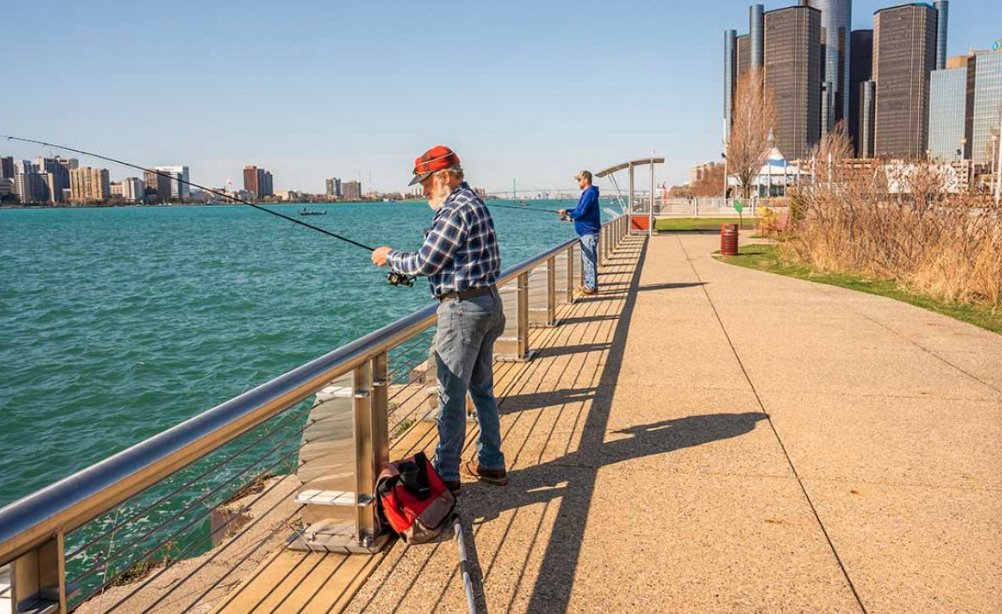
With 36,000 miles of rivers and streams, 20.3 million acres of forests, 1,300 miles of designated mountain bike and bicycle trails, 6,500 miles of snowmobile trails, and more than 600 campgrounds, Michigan has a lot to offer in the way of outdoor recreation. These resources provide connections with nature and opportunities for a healthier lifestyle, and they support Michigan’s economic growth with more than 7,000 outdoor recreation industry companies that include manufacturers and retail and service-sector businesses. And the goal is to continue growing. “When you put Michigan’s outdoor rec growth stats next to the fact that Southeast Michigan is one of the best places for entrepreneurship and venture capital, it becomes about how do we exemplify this and amplify it and bring and support talent here toward even more growth,” said Brad Garmon, director of the Michigan Office of Outdoor Recreation Industry of the Michigan Economic Development Corp. Gov. Gretchen Whitmer created the office in 2019 to focus on the outdoor economy, and the same year, the state joined the Confluence of States (COS), a bipartisan coalition of states dedicated to cultivating strong outdoor recreational economies while preserving land and other natural resources. Garmon, the coalition’s incoming chair for 2023, said the coalition’s four areas of focus align with Michigan’s goals of developing a sustainable future: Economic development, workforce and education, public health and wellness, and conservation and stewardship. “There is inherent connectivity between the outdoor recreation industry and building a sustainable future – a sustainable Michigan,” Garmon said. “We are leaning into the four COS areas of focus to create jobs, strengthen the economy, and promote physical activity while also being stewards of our wetlands, waters, forests, trails, parks, and natural resources.” The added infrastructure points to the growth in the outdoor recreation economy. According to the Michigan Economic Development Corp. and the U.S. Bureau of Economic Analysis: Michigan’s outdoor recreation economy grew 15.4% from 2020 to 2021 and is up 30 percent since 2012. The outdoor recreation industry employs nearly 110,000 people in a wide range of occupations and skills, including design and manufacturing, retail sales, and hospitality, accounting for $5 billion in wages and salaries. More than 7,200 of Michigan’s outdoor recreation jobs are in manufacturing, such as boating, RV, and gear manufacturing. The outdoor recreation economy also impacts local retailers across the state to the tune of $3.5 billion, accounting for 32% of the total value-add impact. Retail jobs supporting outdoor recreation totaled over 41,000 in 2021. The value-add is the difference between sales receipts plus other operating income and inventory change and production costs. And more growth is the plan. “We are working on identifying how we can add jobs, and also bring companies in from out of state,” Garmon said. He points to the bike industry as an example, saying, “I attended a bike industry summit recently and a large area of discussion focused on the fact that manufacturing is mostly overseas, and that the legacy of bicycle production in the U.S. has been lost. By pointing them to the manufacturing and engineering expertise in Michigan this creates a pathway for opportunity and a win/win for all.” Another area of interest for Michigan is the electrification of motor sports vehicles. “This industry is looking at and thinking about an electric future now, and our innovation in this area could bring big opportunities and more business,” Garmon said. Given that Michigan is also being recognized as a destination for startups and venture capital investment, the implication of opportunity gets even stronger. In fact, Detroit is the No. 1 emerging startup ecosystem globally, according to newly released rankings from Startup Genome’s 2022 Global Startup Ecosystem Report (GSER). When you consider that Detroit has also been recognized as one of the best travel destinations in the world, one of Time’s ‘Worlds’ Greatest Places’, and the Riverwalk is consistently voted best in the America, Detroit becomes even more interesting. Garmon shares, There is this antiquated idea that recreation only happens in wild or natural places, but Detroit is demonstrating that recreation happens everywhere. The Dequindre Cut, Belle Isle, the Riverwalk, and our parks all support quality of life and activity and recreation in Detroit. He added: “You don’t have to be on a trail or working in the wilderness to apply work skills and/or enjoy life. We are getting better at telling Detroit’s story and talking about Michigan’s assets and not living in the shadows of places like Colorado – we are now standing right next to them.” Be sure to subscribe to our newsletter for regular updates on sustainable business practices in and around Detroit.
A New Boulevard for Social Justice, Connectivity, and Economic Impact
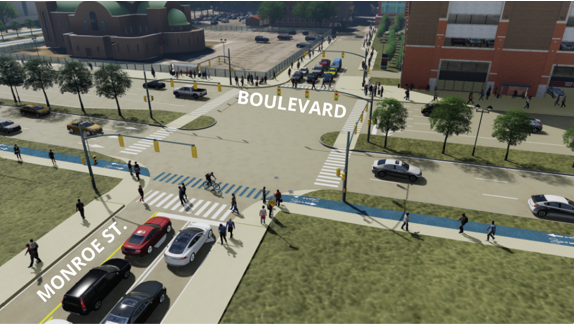
The development of I-375, the extension of I-75 that runs into downtown Detroit, leveled the Black Bottom residential neighborhood and the Paradise Valley entertainment district when it was constructed in the late 1950s and early 1960s with economic impact displacing 130,000 people, hundreds of small businesses, churches, and more. The city has been divided by the highway for over 70 years. Now, the Michigan Department of Transportation (MDOT) is funneling $104,657,051 from the President’s Bipartisan Infrastructure Law that passed last year to replace the one-mile-long freeway and develop a lower-speed urban boulevard with the impetus to recognize the wrongdoing of the past and get it right for the future. The project proposes three elements of study, design, and research. The first is understanding the urban design profile … how this area is developed to reconnect Downtown Detroit and the riverfront to the surrounding neighborhoods. Second is the final boulevard design, which is intended to enhance the urban experience based on City of Detroit design standards and offer new economic opportunities via business development. Finally, the framework will determine how diversity, equity, and inclusion can be used to create opportunities for Detroiters, taking the history of the land into consideration. This is the first of a two-part article that will cover the project’s social justice, connectivity, and economic impacts. In this article, MDOT Director Paul C. Ajegba talked to SBN Detroit about this ‘very unique and challenging project.’ With more than 31 years of experience at MDOT, Ajegba established the position of chief culture, equity, and inclusion officer at the deputy director level within his leadership team. This followed his work to establish MDOT’s Historically Black Colleges and Universities (HBCU) Transportation Diversity Recruitment Program (TDRP). The program is a partnership between MDOT, the Federal Highway Administration (FHWA), the American Council of Engineering Companies of Michigan (ACEC), and Michigan colleges and universities, offering on-the-job training to minority undergraduate students pursuing degrees in engineering. Ajegba is a member of the Conference of Minority Transportation Officials (COMTO) and serves on the following boards: the American Association of State Highway and Transportation Officials (AASHTO) (vice president), chair of the AASHTO Council on Public Transportation, ITS America, Mcity, the University of Michigan Civil and Environmental Engineering Friends Association (board president), the Engineering Society of Detroit, and the . Q: What is the impetus behind the I-375 project? A: It is a way for us to recognize that things were not done right in the past, and it is our opportunity to get them right. In the early ‘50s, Black Bottom was a large community with many thriving African American residents and businesses. In those days we did not have the community engagement that we do now. City planners decided that the best use of the area was to build a freeway and they did it, causing the displacement of thousands of residents and many successful businesses. So, the impetus behind this project is to take a step back and rethink the way we plan and design, build our infrastructure and then build it with the users, stakeholders, businesses, and residents in mind. It is the opportunity to conduct a 360-degree review of all areas of impact and make decisions that are right for everyone. The equity and inclusion piece of this is huge. We are being meticulous and methodical in how we plan to make sure the community is engaged every step of the way. Q: What is the narrative around the topic of equity? A: We need to bring equity into our transportation infrastructure. We cannot erase the mistakes of the past, but what we can do is make sure we look through and operate through a lens of equity going forward. Several different uses of this area have been on the table. We engaged with the community and together decided that creating a boulevard that will attract new development and connect neighborhoods is the best use of the corridor. Q: How will this project honor the history of Black Bottom and Paradise Valley? A: We are currently in the design process and considering all different ways to do this and we are hiring a historian to help with this aspect. Recognizing and honoring what took place here will be built into the aesthetics of the whole corridor. You will see this reflected in the project overall. Q: Is this project part of a larger shift toward building state infrastructure with equity in mind? A: I think there is a big shift taking place not only in Michigan but across the country to rethink inclusivity when it comes to building infrastructure. There is a substantial focus on developing walkable communities, making sidewalks wider, incorporating bike lanes, and connecting neighborhoods with greenways. The walkable aspect gives local businesses in the area more foot traffic and access opportunity. I believe this is an equity issue, an economic issue and also a health issue. Making areas accessible for walks and bike rides and connectivity and movement is important. Q: How did this project originate? A: Discussions began eight years ago. The bridges and roadways have required repair and are at the end of their useful service life. So instead of simply repairing them, we began to look at rethinking the freeway and asking ourselves – Is this the right thing for the city? Extensive research was conducted with a Planning and Environmental Linkage (PEL) study to identify and evaluate alternatives for the corridor that would meet the transportation needs of all users and improve connectivity. This led to the determination that the transformation from a freeway to a boulevard was feasible. This then led to an Environmental Assessment (EA) study to document the human and natural impacts associated with any proposed improvements. What we landed on is a street-level boulevard that will begin south of the I-75 interchange and continue to the Detroit River (Atwater Street), effectively using the city grid to disperse and collect traffic, opening additional connections to the riverfront, Eastern Market, and Brush Park, and creating
